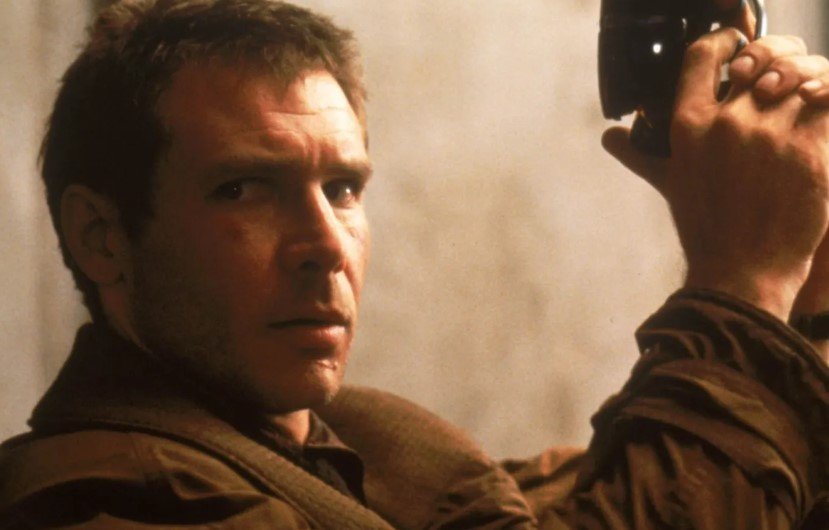The sci-fi cult classic quietly climbs to the top 10, outshining Marvel and modern thrillers in a surprise resurgence 43 years later.
For a movie released in 1982, Blade Runner has absolutely no business trending in 2025. But here it is — gliding past Marvel blockbusters and new thrillers to take the #6 spot on streaming charts. No anniversary, no director’s cut re-release, no viral TikTok. Just pure viewer interest. That’s kind of wild.
Harrison Ford’s futuristic noir flick has found a new home on platforms like Prime Video, YouTube Premium, and Fandango. It’s old, it’s slow by today’s standards, and it’s moody as hell — yet somehow, it’s outperforming big-budget hits and tapping into the zeitgeist all over again.
Streaming Data Puts Blade Runner Back in the Spotlight
According to Just Watch, which tracks data across over 50 million monthly viewing habits, Blade Runner is the oldest title in the Top 10 streaming chart this week. That alone is noteworthy. But it gets better.
In a list dominated by new releases like Happy Gilmore 2, The Amateur, and The Fantastic 4: First Steps, Blade Runner ranked above Marvel’s newest tentpole Thunderbolts and video game adaptation Until Dawn.
This isn’t nostalgia-driven rewatching by a handful of diehards. This is widespread — new fans discovering it for the first time. Maybe it’s the aesthetics. Maybe it’s Ford’s haunted stare. Or maybe, in a world more dystopian than ever, Blade Runner just hits differently now.
One sentence here — to let it breathe.

A New Generation Finds Meaning in an Old Future
When Blade Runner first hit theaters in 1982, it didn’t break records. In fact, it barely cracked the box office. Critics were split. Some hated the pacing. Others got lost in the plot. But over time, something strange happened — it stuck. Like a whisper in the dark.
Fast forward four decades. Kids born after Blade Runner 2049 are now clicking play on the original. Why? Maybe because…
-
AI is no longer fiction — it’s a news topic.
-
Climate anxiety mirrors the film’s polluted, rainy L.A.
-
The concept of “what makes us human” feels eerily relevant.
And let’s not forget: It just looks good. The neon-drenched cityscapes, the analog futurism, the trench coats. It’s a visual feast — and in 4K, it feels brand new.
Streaming Wars Meet Old School Cinema
Here’s where things get interesting. In a market flooded with content, streamers have turned to older, proven titles. Not because they’re cheap — though that’s part of it — but because they deliver consistent engagement.
So how exactly is Blade Runner pulling in viewers in 2025? Let’s break it down:
| Platform | Viewer Engagement (July 2025 est.) | Revenue Model |
|---|---|---|
| Prime Video | High | Rental & Purchase |
| YouTube Premium | Moderate | Rental & Purchase |
| Fandango | Niche | Purchase Only |
| Netflix/Hulu/Disney+ | Not Available | Not Streaming Licensed |
It’s not on Netflix or Disney+. You’ve got to actually seek it out — and pay for it. That says something.
Ridley Scott’s Legacy Feels Timelier Than Ever
The late ’70s and early ’80s were good to Ridley Scott. Alien gave him street cred. Blade Runner gave him cinematic immortality. But this wasn’t just another sci-fi thriller — it was mood, myth, and metaphor rolled into one.
Back then, Scott was pulling from Philip K. Dick’s Do Androids Dream of Electric Sheep? — a cold, haunting story about identity and morality in a post-human world. But the film version? It was jazz. Mysterious. Slow. Confusing in a good way.
And now, it’s being studied all over again in dorm rooms, film classes, Reddit threads, and TikTok thinkpieces. A quote here. A clip there. Pretty soon, everyone’s asking: “Was Deckard a replicant?”
There’s no right answer. That’s the beauty of it.
Sci-Fi Isn’t Dead — It Just Got Smarter
Modern science fiction tends to go loud. Explosions. CGI. High-speed pacing. And sure, some of it’s great. But Blade Runner reminds us of a time when science fiction was quiet. Philosophical. Obsessed with questions more than answers.
Weirdly, this might be why it’s finding an audience today.
The newer films on the Top 10 list — Sinners, The Amateur, Death of a Unicorn — they move fast. But Blade Runner asks you to sit still. Watch the rain. Feel the silence. Pay attention to the subtle shift in Roy Batty’s voice before his legendary monologue.
“One sentence here again.”
Where Does Blade Runner Go From Here?
There’s no reboot scheduled. No prequel series. No “Blade Runner Cinematic Universe” — though someone, somewhere has probably pitched it. And yet, its cultural footprint is growing.
Streaming platforms may very well re-license the sequel, Blade Runner 2049, to ride the wave. There’s chatter about curated bundles, director retrospectives, and maybe even bonus commentary content for diehards.
But for now, the film’s resurgence is pure. No marketing machine. Just people pressing play.








